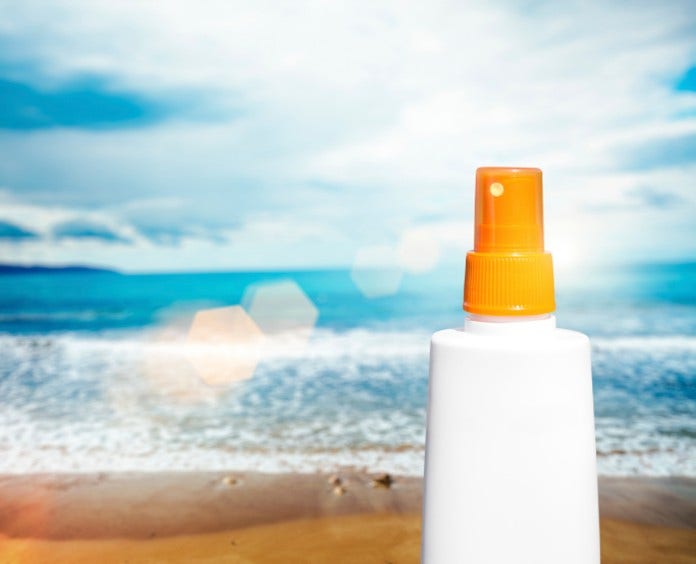Researchers Identify States Where Improved Sun Protection Could Prevent the Most Melanomas

Rates of skin cancer in the US are rising, even though most cases are preventable because they’re related to sun exposure and indoor tanning. A study in the International Journal of Cancer found that 91% of all melanomas in the US were linked with ultraviolet (UV) radiation—mostly due to sun exposure. That rate was even higher among non-Hispanic whites, at 94%. These rates underscore the need for broader use or enforcement of preventive, sun protection measures across states, said the study’s authors, who are researchers from the American Cancer Society (ACS) and Harvard University’s T.H. Chan School of Public Medicine in Boston.
Where Most Melanomas Are Occurring and Why
The study’s authors estimated the cases of melanoma due to UV radiation in each state from 2011 to 2015. They studied the total US population, but at the state level they focused their results on non-Hispanic whites because they’re the group most likely to develop melanoma. Blacks are the least likely. Without this adjustment, results could have been skewed. For instance, states that seemed to have lower rates of melanoma linked to UV radiation could have been due to their higher proportion of non-white populations. Here are some of their key findings.
Differences in Rates of UV-Related Melanoma by State
The incidence rate of melanoma due to UV radiation was considerably high in all states.
- Hawaii had the highest proportion of melanoma due to UV radiation—97% of all cases. Alaska and the District of Columbia had the lowest, with 88% of all cases.
- Many of the states with the highest rates of melanoma due to UV radiation were along the East Coast (Delaware, Georgia, Maryland, North Carolina, Florida, South Carolina, New Jersey, and New Hampshire) and West Coast (California, Oregon, and Washington).
- The rate of melanoma due to UV radiation was also higher in several landlocked states: Vermont, Utah, Minnesota, Idaho, Kentucky, and Colorado.
Several factors can contribute to the risk of melanoma, including the use of sun protection, the UV Index in the area, and the use of indoor tanning facilities.
Effect of Sun Protection and the UV Index
“The amount of UV exposure you get depends on both the strength of the sun’s rays—measured by the UV Index—and the length of the time your skin is exposed to it,” said Farhad Islami, MD, PhD, the study’s lead author and an ACS Scientific Director in Surveillance Research.
When you’re outside and the UV Index is high, you increase the chance of sunburn and skin damage that could ultimately lead to skin cancer.
The risk of melanoma increases when people spend prolonged time outdoors without enough sun protection, especially during activities like going to a beach, lake, or outdoor swimming pool, as well as boating, and water or snow skiing. Jobs that involve a lot of time outdoors, like farming or construction work, may also increase the risk of melanoma when workers don’t use sufficient sun protection.
“You can’t change the UV Index, but you can change how long you’re outside and how you protect your skin,” Islami said. For instance, you can seek shade, avoid peak sunlight, wear protective clothing, and use sunscreen.
To check the daily UV Index forecast in your area, see the Environmental Protection Agency’s website.
- The southern states, California, and especially Hawaii, are closest to the equator and tend to have a higher UV Index.
- States at a high altitude, such as Utah and Colorado, also tend to have a relatively high UV Index.
- High rates of melanoma in states that tend to have a low UV Index, such as Minnesota and Idaho, are likely related to prolonged exposure to sun rays and inadequate sun protection.
Effects of Indoor Tanning
The high number of teen girls in the 1990s who used indoor tanning facilities likely contributed to the increased incidence in younger females than males in this study. Indoor tanning was most common in the Midwest.
Despite fewer people getting indoor tanning recently, 1 out of 4 white women 18 to 21 years old were still tanning inside as of 2015. The proportion in women 22 to 29 was nearly as high.
Only 19 states and the District of Columbia have laws that completely ban the use of indoor tanning devices for people under 18. Another 27 states have some restrictions. Check your state at Tanning Legislation 2020.
How to Reduce the Risk of Melanoma in the US
Many people in the US don’t protect themselves enough from the sun. In fact, 1 out of 3 men and 1 out of 4 women say they don’t use any sun protection. Only about 1 out of 5 men use sunscreen with a sun protection factor (SPF) of 15 or higher, and about 2 out of 5 women do.
“State- and community-level cancer control programs can use our findings to prioritize and develop or expand school-based programs and indoor tanning regulations,” said Islami.
Still, the authors said more research needs to be done to find the best ways to get people across the US to increase their use of sun protection. “We might benefit from studying programs in other countries that have been successful,” Islami said. As an example, he noted the SunSmart intervention in primary schools in Australia, which has likely contributed to the declining melanoma rates since the mid-1990s in Australians ages 15 to 24 years.
See the list of related articles below to learn more about protecting yourself from the sun.
- Helpful resources
- For researchers




